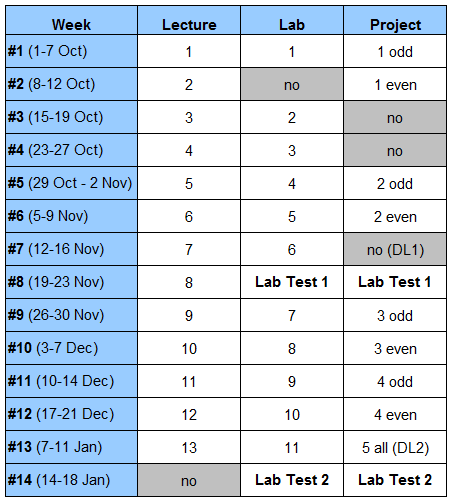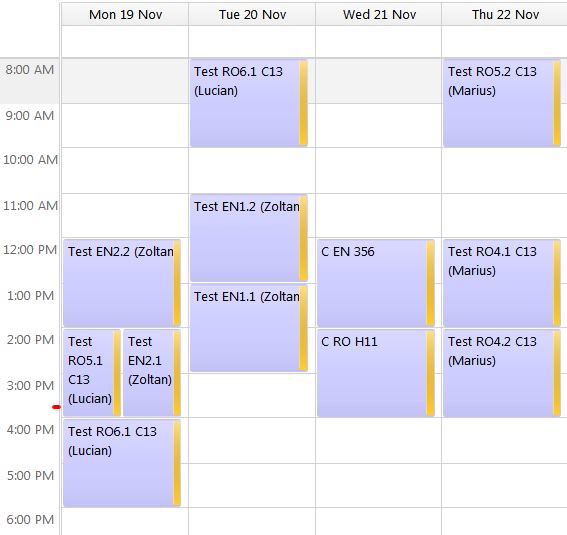
Lecturer: Lucian Busoniu, TA: Zoltan Nagy
Navigation: [Versiunea romana|Evaluation rules|Schedule|Course material|Labs|Lab tests|Project|Contact] [Back to Lucian Busoniu's webpage]
The course introduces nonparametric methods for system identification, as well as parametric methods including prediction error and instrumental variables techniques. Completing the control engineer's identification toolbox, input signals, online recursive methods, and model validation are also discussed. The material is described at an appropriate BSc level, and builds in a self-contained manner the required mathematical background. The course is based on the book System Identification by Soderstrom and Stoica.
This course is part of the Bachelor program of the Automation Department, UTCluj (3rd year 1st semester). Prerequisites: linear dynamical systems and linear algebra. The lecturer is Lucian Busoniu, while Zoltan Nagy teaches the lab classes for the English line.
Evaluation rules
Grading:
The lab solutions, the two lab tests, and a project solution are all required before being admitted to the exam. The lab solutions are validated by the TA during the lab. It is therefore not enough to be present at the lab in order to validate it; a working, original solution must be developed during the lab. At most two labs can be recovered at the end of the semester; hence, accumulating three or more missing labs means you can no longer become eligibile for the exam during the current year. More details about each component (labs, lab tests, project evaluation) will be found at the appropriate places in their separate descriptions below. You can find your current status here.
Schedule
Dates and locations:
Due to interdependencies between lectures, labs, and project classes, as well as other reasons such as national holidays, the actual schedule is slightly different from the official one. For instance, during the test weeks, we will need to use some project slots for the test as well, so that everyone has time to take the test. Please look at the schedule carefully to determine exactly when you should be in class.

Everything takes place in the room and time slot indicated in the official schedule, so you don't need to worry about changes there.
Course material
The lecture slides are mandatory reading; they will be written down in detail to give a self-contained, complete picture of the topics. They are made available here in time for each lecture.
In addition to the slides, followers may optionally consult the following books:
Each student is assigned a randomly chosen technique studied in the labs, and a randomly chosen dataset; the student must then apply the technique to the dataset. The solution consists of Matlab code, which must be submitted at the end of the test, and will be run and verified by the lecturer. The test is 1 hour long, and the solution must be developed in the first 50 minutes; the last 10 minutes are reserved for discussing the solution with the lecturer. To ensure the test is solvable in the time slot allowed, some techniques can be applied in a simplified manner. These simplifications will be explicitly indicated in the test material.
You are free to use the course material, including lecture slides, lab descriptions and data. All this will be available offline on the computer on which you will take the test. The complete Matlab documentation is of course also available. However, the internet connection is disabled on the computer and you are not allowed to use internet-connected devices, or to reuse the solutions you developed for the labs.
Update: You can now find your test slots in the online status table, see above for the link. The format of each slot is: day in the week of Nov 19-23 / hour. The test is during the normal lab slot; please note that the halfgroups are separated only approximately, to ensure that no more than 8 students take the test at the same time. Please be on time; the one-hour interval cannot be exceeded since your colleagues are starting the test immediately after that. If for well-founded reasons you cannot make it on the assigned slot, please contact the lecturer as soon as possible with a request to change the slot. Reassignments cannot be made if they result in more than 8 students taking the test in the same time slot.
A quick look at the timeslots per half-group:

For the second test, the rules are exactly the same as for the first test, but now the subjects are from labs 7-11. We are taking the test in the same weekdays as before, except it is now in the week of 14 January. The overall planning is below, and the specific time slots per students can be found in the status Google Sheet.
See the project description (PDF) for the topic, rules, and deadlines. Please read it carefully. A detailed description of the linear regression method needed in the first part of the project can be found in last year's lecture; this year we talk about it in lecture 3.
Contact
Comments, suggestions, questions etc. related to this course or website are welcome; please contact either the lecturer or the TA at the addresses below (given as images for spambot protection).
